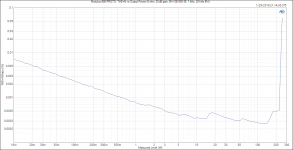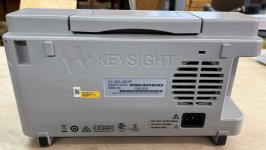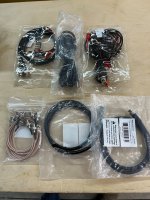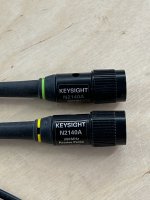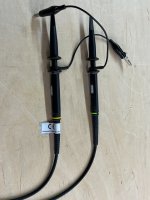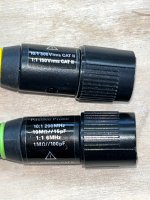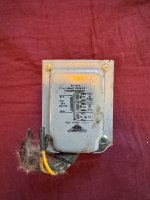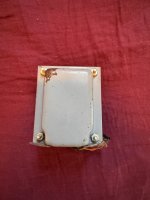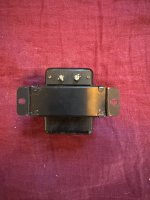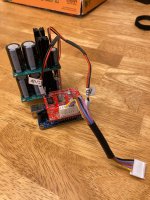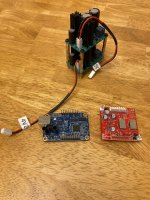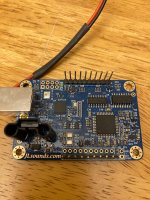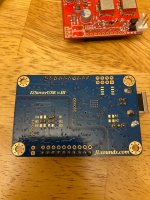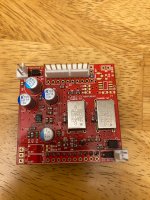Modulus-686: 380W (4Ω); 220W (8Ω) Balanced Composite Power Amp with extremely low THD
The Modulus-686 is a balanced composite bridge/parallel amplifier. It uses six LM3886 amplifier ICs to provide nearly 400 W into 4 ohm loads at vanishingly low distortion. With a typical output current capability of 33 A, the Modulus-686 easily drives even the most challenging loads, including loads with impedance dips into the 2 ohm range.
You can find the build pictures from a couple of representative builds by following these links. This is not an exhaustive list.
Key Features:
- Mono construction.
- 4-layer, gold plated, ROHS compatible circuit board. Professionally assembled in Calgary, Canada.
- Output power: 380 W (4 ohm) -- 220 W (8 ohm).
- Ultra-low 0.00026 % THD+N (140 W, 8 ohm, 1 kHz).
- Ultra-low 0.00029 % THD+N (260 W, 4 ohm, 1 kHz).
- 16 uV RMS (A-weighted, 20 dB gain, 20 Hz - 20 kHz) output noise.
- 1 kHz + 5.5 kHz IMD <-110 dBc @ 1 W.
- Gain: +26 dB. Changeable by resistor option. Minimum gain: +20 dB.
- On-board EMI/RFI input filter and ESD protection.
- Power supply agnostic circuit architecture. The Modulus-686 performs identically on an unregulated supply as it does on a well-regulated supply.
- Board dimensions: 8.25 x 2.30 inches (approx. 210 x 60 mm)
Full set of measurements found in
Post #252 and
Post #254. The transient response is shown in
Post #331.
Also note that the Modulus-686 can be built for lower output power by lowering the supply voltage. For example, by running the Modulus-686 on ±27 V, it will provide 125 W into 8 Ω and 200 W into 4 Ω. Lower output power allows for a smaller heat sink. For a more comprehensive list of output power vs supply voltage, see
Post #486.
It is always my goal to offer a positive build experience. Many businesses can deliver a good experience when all goes according to plan. In my view, examining the level of customer service when something doesn't go quite as planned is much more indicative of the quality of a business. Such an example is shown in
Post #864. Note that all turned out well in the end. Also note the comparison of the Modulus-686 to a 12000 Euro (~$13600) commercially available amp towards the end of
Post #864.
The Modulus-686 combines the learnings from the
Modulus-86,
-286, and some of the compensation tricks employed in the
HP-1 to form a state of the art power amp. It is intended to operate from a +/-36 V supply and will provide the same stellar performance when powered by a switching supply as it does from a regular linear unregulated supply. A
Power-86 with a 2x25 VAC, 500 VA transformer or a pair of Mean Well RPS-400-36 would work well for a mono MOD686 build. As seen in the third THD+N plot, the max output power is a little lower with the Power-86 as the rail voltage droops a little under load.
The Modulus-686 is currently available in two board options:
- All surface mounted devices (SMD) pre-populated.
- Fully assembled and tested amplifier module.
Update 2018/10/25: Do note that once the current board stock has sold, the SMD pre-populated option will be eliminated and I will only offer the fully assembled module option.
Unlike my past projects, I will not offer bare boards for sale. There are a couple of reasons for this:
- Focusing on assembled and partially assembled modules allows me to lower the cost to everybody's benefit.
- Supplying assembled and partially assembled boards allows me to serve my customers better and broaden my customer base.
- Machine-soldered SMD boards perform much more consistently and reliably than hand soldered boards -- even for competent builders.
So basically, I can deliver a higher quality product by leaving the SMD assembly to the pros. This benefits everybody.
The full description of the Modulus-686 is available on its product description page:
Neurochrome :: Modulus-686 :: 220W (8Ω); 380W (4Ω) @ 0.00026% THD+N.. A picture of the prototype is attached here.
The Modulus-686 circuit boards have arrived from the manufacturer. You can order yours here:
https://www.neurochrome.com/product/modulus-686/
Thanks,
Tom











